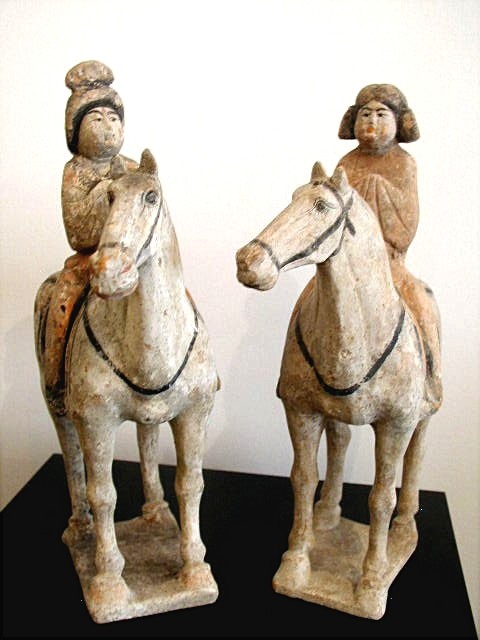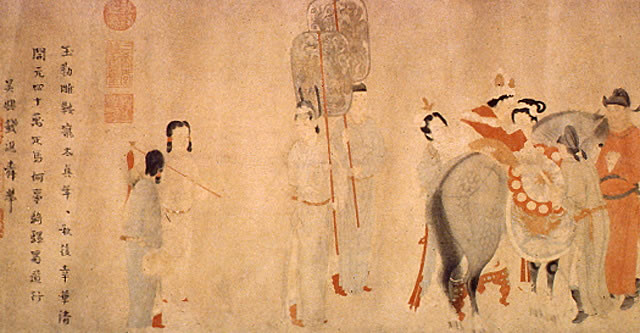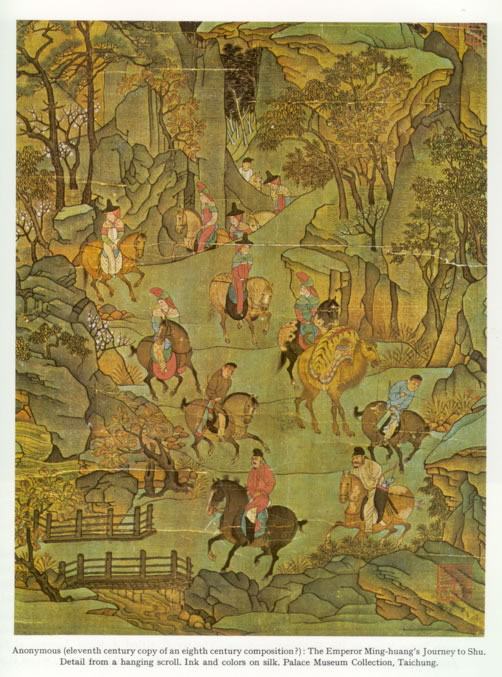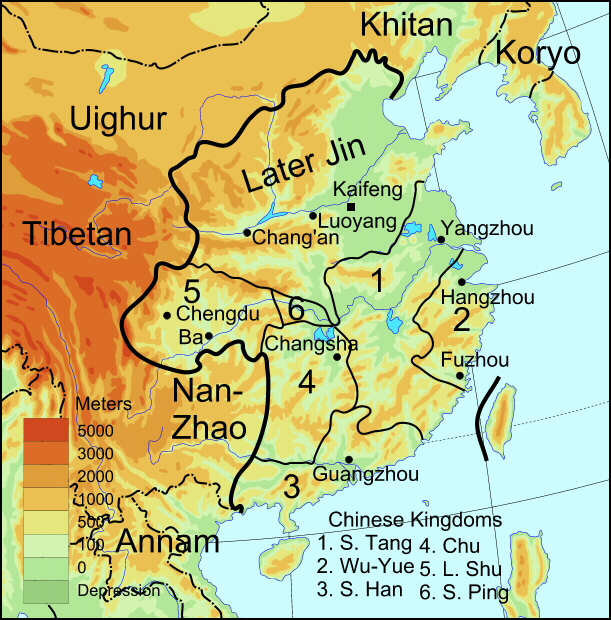 Tang lady (fashion before
Yang Guifei)
Tang lady (fashion before
Yang Guifei)
Keynotes 7.1
The fall of the Tang
When Wu Zetian retired and returned power to the imperial aristocracy, the formerly ruling Li-clan, the aristocrats competed with the officials she had recruited through the examination system, - an unhealthy political power play.
During the brilliant period (710-755) of political unity,
administrative stability, and economic strive in the Tang in which the dynasty
reached its cultural dominant influence in Asia, emperor Xuanzong (r.712-756)
- conducted a population census to get a survey of the taxable population. He
also
- reorganized the stud farms that provided the Tang imperial armies with a sufficient
supply of horses. At the northern border
- military regions were established that were supervised by imperial commissioners
with de facto autonomy. These large border armies eventually became
a threat to the central administration
when their commanders' power increased.
When emperor Xuanzong fell under the spell of his favorite
concubine Yang, he began to neglect his official duties on a large scale.
 Tang lady (fashion before
Yang Guifei)
Tang lady (fashion before
Yang Guifei)


Yang Guifei mounting her horse
Emperor Xuanzong also failed to intervene when she installed relatives in dominant positions at court. When the posistion of prime minister became vacant due to the death of Primeminister Li Linfu, general An Lushan, a relative of Imperial concubine Yang and Yang Guozhong, a cousin of emperor Xuanzong competed for the position. Yang Guozhong was called to office. General An Lushan, who was of Sogdian descent, was enraged and started a military rebellion of unseen scale.
Emperor Xuanzang had to flee to Sichuan, an event that has been captured in the painting below which depicted his flight as "Emperor Xuanzang's journey to Shu (Sichuan)". On the trip the soldiers who protected him, forced him to strangulate Yang Guifei whom they saw as the source of the political upheaval that the Tang dynasty had to experience.
 Emperor
Minghuang (=Xuanzang)'s journey to Shu
Emperor
Minghuang (=Xuanzang)'s journey to Shu

Detail of a different painting of the same topic
Although An Lushan was killed in 757 after he had conquered the capital Chang'an, the rebellion lasted for eight years (755-768) under the leadership of An Lushan's 'brother in arms' Shi Siming.
The rebellion caused a landslide in Chinese politics, intellectual life, diplomacy, and the economy. Vietnam and Korea became independent. The population registers became unreliable because large aristocratic landowners swallowed up farmland that had belonged to independent farmers. They now had to work as tenants of the large estates belonging to members of the extended imperial clan and to imperial commissioners and their relatives. When their power became hereditary, the concentration of power in the hands of individual local leaders could no longer be held up. These local military commanders eventually became the leaders of the 'Five Dynasties and Ten Kingdoms', dynastic houses of local dominance.

Map of the Five Dynasties